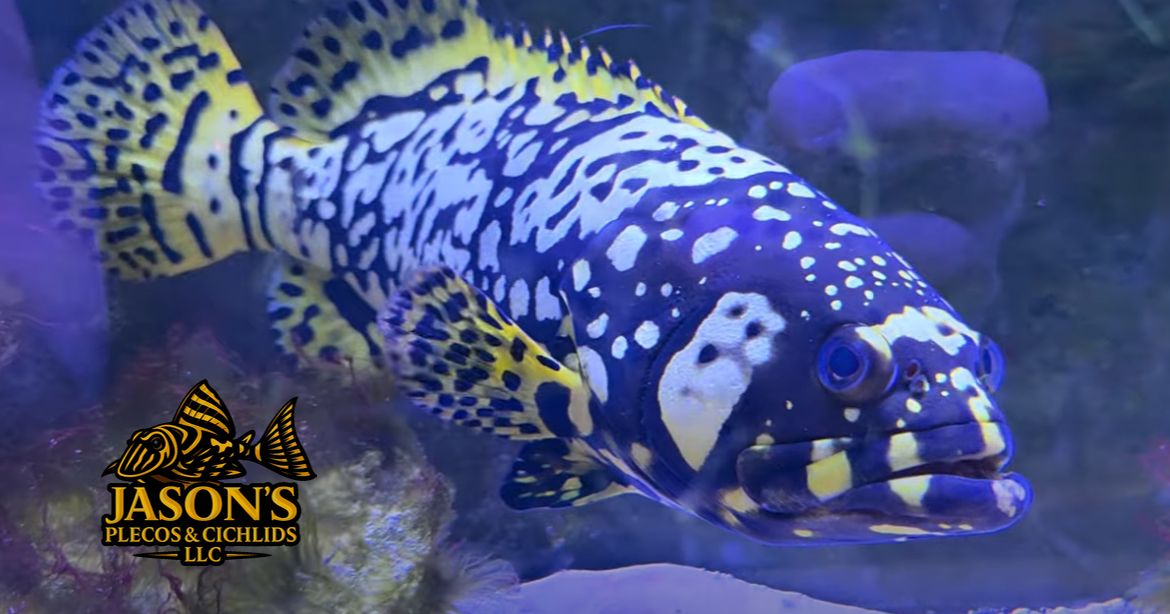Bumblebee Grouper - (Epinephelus lanceolatus)
5.0
1 reseña
Reseñas de clientes verificados que han comprado productos en esta tienda.
$400.00
Agotado
was $500.00 Ahorra 20%
Price of shipping is not included.
Size
Por favor, seleccione
Special Bag
Por favor, seleccione
Questions, Comments, Concerns? Let us know!
Introduzca su texto
Agotado
Guardar este producto para más tarde
Reseñas de los clientes
Reseñas solo de clientes verificados
Solo se aceptan reseñas de clientes verificados que hayan iniciado sesión y comprado los productos. Esto garantiza que cada opinión se basa en experiencias reales de los clientes. Todas las opiniones se comprueban antes de su publicación para evitar el spam.
Joe N.
Lakewood,
United States
DIC 11, 2025
The customer service was great and the fish itself they got some really nice stuff
Bumblebee Grouper - (Epinephelus lanceolatus)
Información del producto
🐟 Bumblebee Grouper (Epinephelus lanceolatus) Full Saltwater
The Bumblebee Grouper, also known as the Giant Grouper, is a massive, predatory fish native to the Indo-Pacific region, particularly around the Great Barrier Reef. Known for its bold yellow-and-black striped pattern, this fish resembles a bumblebee, making it an eye-catching addition to any aquarium. In the wild, Bumblebee Groupers can grow up to 9.8 feet (3 meters) and weigh over 900 pounds (408 kg) as adults, making them one of the largest and heaviest species of groupers.
🌊 Tank Setup for Bumblebee Grouper
- 🏠 Tank Size: A minimum of 4000 gallons or more for a single adult is required, but 5000+ gallons is recommended as these fish can grow very large.
- 🪨 Aquascaping: Create an environment with rocks, caves, and plenty of open swimming space. Bumblebee Groupers enjoy exploring and need shelter to feel secure.
- 💨 Water Flow: Moderate to strong water flow, mimicking the natural currents found on the reef.
- 💡 Lighting: Bright lighting to simulate natural sunlight, but not too intense to avoid stress.
🍽️ Diet for Bumblebee Grouper
- Carnivore: Bumblebee Groupers are opportunistic feeders that require a high-protein diet:
- 🦐 Live or frozen foods such as fish, squid, and shrimp.
- 🥩 Sinking pellets or fish fillets as supplements.
- Feeding Tips: Provide appropriately sized food to avoid choking. These fish have large mouths and strong appetites!
⚖️ Temperament of Bumblebee Grouper
- Aggressive: Bumblebee Groupers are territorial and aggressive, especially toward smaller fish. They are best suited for species-only tanks or large tanks with equally tough tank mates.
- 🦈 Tank Mates: Ideal companions include large, robust fish like tangs, wrasses, or other aggressive species. Avoid keeping them with smaller fish that may become prey.
- 💪 Territorial: These fish will establish a space within the tank and may become dominant over time.
🧠 Behavior & Care for Bumblebee Grouper
- 🐾 Activity: Primarily nocturnal, although they may forage during the day if hungry.
- 📏 Size: In the wild, they can grow up to 9.8 feet (3 meters), but in captivity, they typically reach 2 to 3 feet.
- 💧 Water Parameters:
- 🌡️ Temperature: 75–82°F (24–28°C)
- ⚖️ pH: 8.0–8.4 (slightly alkaline)
- 🌊 Salinity: Marine (SG 1.020–1.025)
- 🔄 Lifespan: Can live up to 30 years in the wild, with a lifespan of 15-20 years in captivity if cared for properly.
- 🧼 Maintenance: Requires regular water changes and high-quality filtration to maintain optimal health.
📋 Bumblebee Grouper Facts at a Glance
- Scientific Name: Epinephelus lanceolatus
- Common Names: Bumblebee Grouper, Giant Grouper
- Origin: Indo-Pacific, Great Barrier Reef
- Size: Can reach 9.8 feet (3 meters) and weigh over 900 lbs (408 kg) as adults, though typically around 2–3 feet in captivity.
- Temperament: Aggressive / Territorial
- Tank Size: Minimum 200 gallons (300+ gallons recommended)
- Diet: Carnivore, high-protein foods
- Experience Level: Advanced hobbyists
💡 Bumblebee Grouper Care Tips
- ✅ Expert Level: This fish is best suited for experienced hobbyists due to its size, aggression, and dietary needs.
- 🦈 Aggression Management: Given their territorial nature, Bumblebee Groupers should only be kept with large, aggressive fish that can hold their own.
- 🌐 Long-Term Commitment: With a potential lifespan of 30 years, these fish require a long-term commitment and careful attention to their tank conditions.
Impulsada por Lightspeed
Mostrar precios en:USD
